Runner Thistle: [Cultivation, Irrigation, Care, Pests and Diseases]

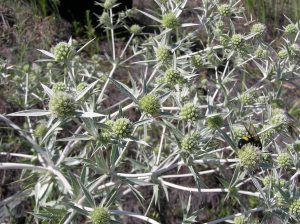 The Eryngium campestre is a plant from Eurasia and Africa. It has been known since ancient times and was used to neutralize poisons and soothe itchy wounds. Hence, it is also known by the popular name of «herba de la escocedura».
The Eryngium campestre is a plant from Eurasia and Africa. It has been known since ancient times and was used to neutralize poisons and soothe itchy wounds. Hence, it is also known by the popular name of «herba de la escocedura».
Until a few centuries ago it was used in the army during the Carlist wars to prevent sores. It is used to treat skin problems, and even to improve the side effects of cancer treatments.
Very probably it receives the adjective of «runner» due to the detachment of the heads of the flowers, and of the dry inflorescences of the stem, when the wind blows strongly.
In the Pyrenees region it was observed that weasels seek out runner thistle and rub against it to counteract the poison from snake bites.
Important points when planting runner thistle:
- Scientific name: Eryngium campestre.
- Common name: Thistle runner, Eringium, erynx, stellate thistle, setero thistle, holy thistle, virgin thistle.
- Height: 20 to 60 centimeters.
- Light requirement: Direct light.
- Temperature: Temperate climates (13ºC to 21ºC).
- Irrigation: Low.
- Fertilizer: Organic fertilizer.
What characteristics does the runner thistle have?
The runner thistle is a spiny herbaceous plant that measures between 20 to 60 centimeters in height . This species dries up during the fall and winter, but is reborn during the spring. It has very deep thick roots that reach up to 5 meters deep.
Its stems are pale green, almost white. These are erect and highly branched. This plant has two types of leaves. Those found at the base are oblanceolate, rough, with teeth and a long point; They can measure up to 15 centimeters in length.

The middle leaves are obovate, spiny and thinner. The flowers of this thistle are white with bluish tones, very small and compact. They are grouped in spherical inflorescences with longer and linear bract leaves. They generally bloom between the months of May and September.
In the case of fruits, these are schizocarps, that is, dry fruits that do not open to release the seeds they keep inside. They are brown in color and measure approximately 1 millimeter in length.
When to sow the runner thistle?
Runner thistle can be sown in the fall, on the ground, or in the spring, after the frost weather has passed. It can also be grown by division in early spring or fall.
Where to plant the runner thistle?
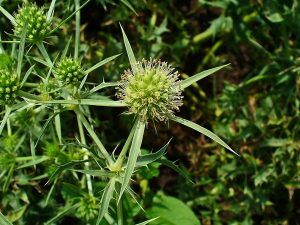 The runner thistle is mainly grown on dry, flat land and in particularly wide spaces due to the size of its roots and its ability to take root several meters deep.
The runner thistle is mainly grown on dry, flat land and in particularly wide spaces due to the size of its roots and its ability to take root several meters deep.
Although it tolerates partial shade, runner thistle needs to be grown in a location where it receives direct sunlight for most of the day. It has no problems in locations with strong winds as it is very resistant.
The most appropriate temperatures to grow it are between 13 and 16ºC, although they can resist temperatures below 10ºC. However, it is advisable to avoid temperatures above 21ºC, or places with cold and humid winters.
How to prepare the land?
Also known as mushroom thistle, it is planted in almost any type of soil, even those composed of poor gravel and lime, as long as it is well drained. It prefers light, sandy soils that mimic the conditions of its natural habitat. It is suggested to maintain a neutral pH, between 6.5 and 7.5.

Although it usually grows in slightly fertile soils, it is advisable to enrich them with organic matter. A little peat moss, or homemade organic matter such as compost, can be applied to the growing area before transplanting or planting.
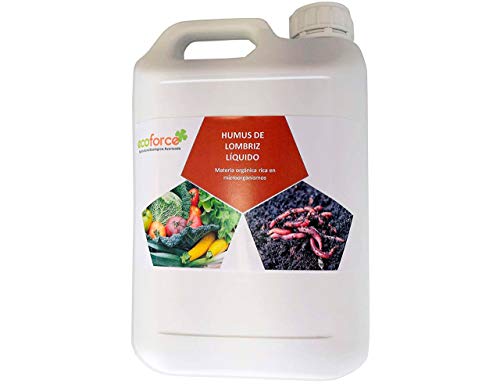
How do we water the runner thistle?
Because runner thistle is a dry environment plant, it has a low water demand. In fact, it tolerates drought and dry soil very well. Due to the above, it is recommended to water it only when the soil is very dry.
It is also advisable to place a mulch with gravel to keep the plant dry during the winter.
How often do we water the runner thistle?
As mentioned, the soil of the Thistle campestre should be kept slightly dry, so irrigation should only be applied when they are subjected to prolonged drought, or to very high temperatures.
How to plant a runner thistle step by step?
Runner thistle is a somewhat difficult species to grow. It can be propagated by seed or vegetative means, such as root division or by cutting. Below are the steps to grow through seeds.
On the floor
- Place the seeds directly in the previously prepared soil at a depth of 2 millimeters, maximum 4 times the length of the seed.
- Lightly water the soil and wait 5 to 90 days for the seed to germinate.
in pots
- Place runner thistle seeds in a moist, well-drained compost substrate, either in a cold frame or in a sealed bag, at temperatures around 4°C for 2 months.
- After the stratification time, move the container to the open air, under sunlight, at temperatures around 20ºC. Wait 2 to 3 weeks for it to grow.
- Transplant into individual pots once a couple of true leaves have sprouted.
What care does the runner thistle need?
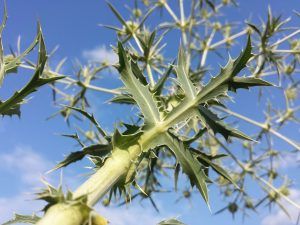 Thistle field is not a demanding plant. Between the cares it is recommended to remove the dead foliage to avoid the rotting of the plant.
Thistle field is not a demanding plant. Between the cares it is recommended to remove the dead foliage to avoid the rotting of the plant.
On the other hand, it is preferable to keep it protected from winter rains, since the humidity in the substrate can promote fungal diseases.
In some places it is classified as an invasive plant. However, in areas of the Mediterranean it is cultivated because its roots are the preferred place for the edible fungus Pleurotus eryngii, also known as thistle mushroom.
What pests and diseases affect the runner thistle?
Runner thistle is a species that is not susceptible to specific pests. However, aphids, slugs or snails may be found.
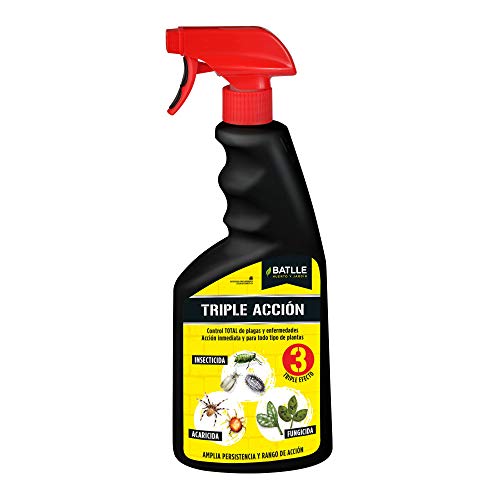
In the case of diseases, the thistle can be affected by excess moisture in the substrate, giving way to root rot.
References
- https://www.elsevier.es/es-revista-revista-medica-homeopatia-287-articulo-interes-terapeutico-eryngium-cardo-corredor–X1888852612229075
- https://eprints.ucm.es/id/eprint/4593/1/T26240.pdf
- https://colombia.inaturalist.org/taxa/162699-Eryngium-campestre
- https://anthropocene.it/en/2021/02/06/eryngium-campestre/
- https://practicalplants.org/wiki/Eryngium_campestre
- https://parkseed.com/success-with-seeds-eryngium/a/growing-eryngium-information/
- https://www.westcoastseeds.com/blogs/how-to-grow/how-to-grow-eryngium
- https://www.johnnyseeds.com/growers-library/flowers/eryngium/eryngium-key-growing-information.html

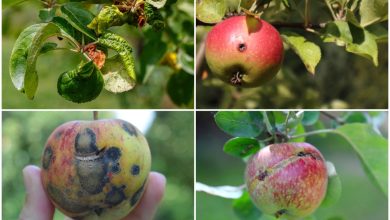
![Photo of How to Prune Watermelons: [Dates, Tools and Ways to Do It]](https://www.complete-gardening.com/wp-content/uploads/2022/08/how-to-prune-watermelons-dates-tools-and-ways-to-do-it-390x220.jpg)
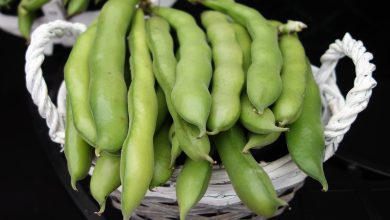
![Photo of Rosebush Cuttings in Potato: [Concept, Season, Rooting and Planting]](https://www.complete-gardening.com/wp-content/uploads/2022/08/rosebush-cuttings-in-potato-concept-season-rooting-and-planting-390x220.jpg)